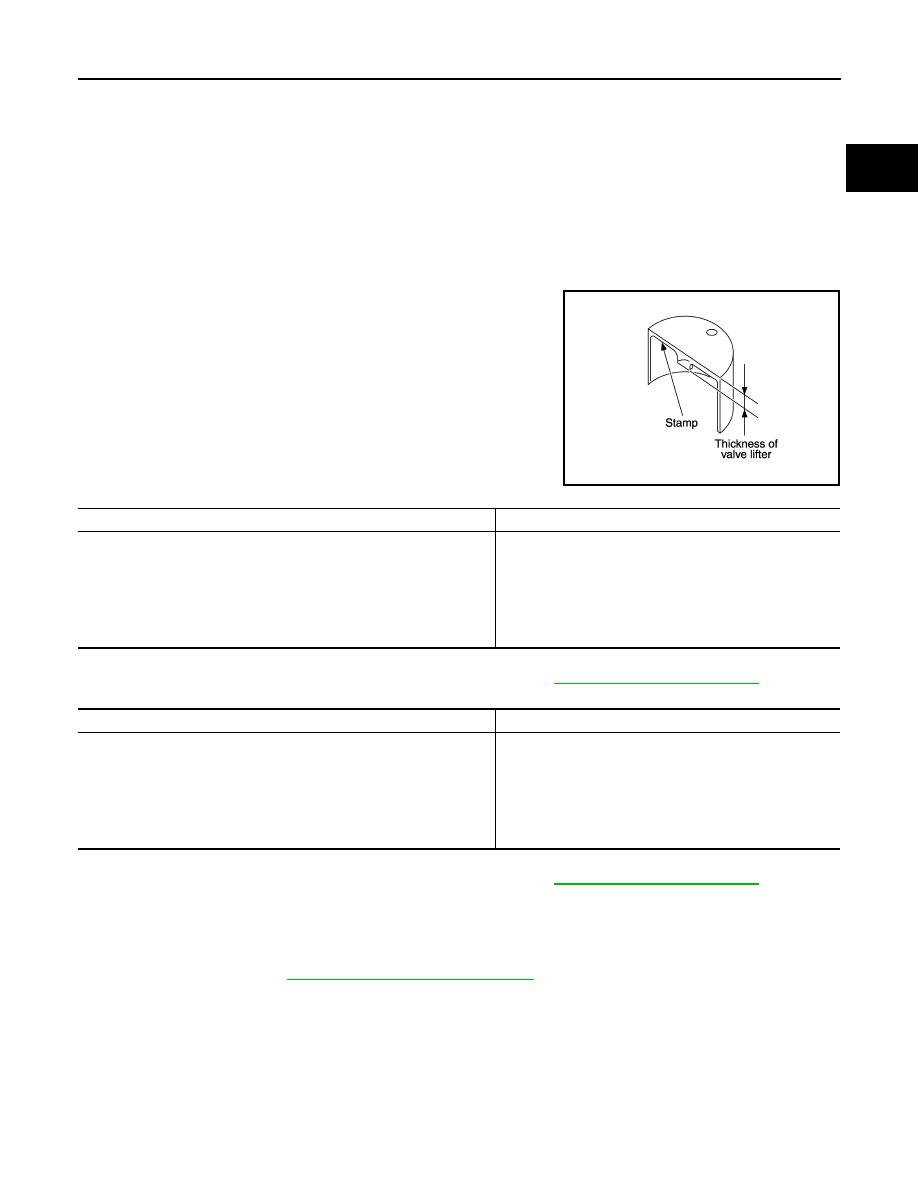Nissan Frontier. Manual - part 737

CAMSHAFT VALVE CLEARANCE
EM-137
< PERIODIC MAINTENANCE >
[VQ40DE]
C
D
E
F
G
H
I
J
K
L
M
A
EM
N
P
O
• Thickness of new valve lifter can be identified by stamp marks
on the reverse side (inside the cylinder).
Intake
Available thickness of valve lifter: 27 sizes with range 7.88 to 8.40 mm (0.3102 to 0.3307 in) in steps of
0.02 mm (0.0008 in) (when manufactured at factory). Refer to
.
Exhaust
Available thickness of valve lifter: 25 sizes with range 7.88 to 8.36 mm (0.3102 to 0.3291 in) in steps of
0.02 mm (0.0008 in) (when manufactured at factory). Refer to
.
CAUTION:
Install identification letter at the end and top, “U” and “N”, at each of proper positions. (Be care-
ful of mis-installation between intake and exhaust.)
6. Install selected valve lifter.
7. Install camshaft. Refer to
EM-193, "Removal and Installation"
.
8. Manually turn crankshaft pulley a few turns.
9. Make sure that the valve clearances for cold engine are within the specifications by referring to the speci-
fied values.
10. Installation of the remaining components is in the reverse order of removal.
11. Start the engine, and check for unusual noise and vibration.
Valve lifter thickness calculation:
t = t
1
+ (C
1
– C
2
)
t
= Valve lifter thickness to be replaced
t
1
= Removed valve lifter thickness
C
1
= Measured valve clearance
C
2
= Standard valve clearance:
Intake
: 0.30 mm (0.012 in)*
Exhaust
: 0.33 mm (0.013 in)*
*: Approximately 20
°C (68°F)
KBIA0119E
Stamp mark
Thickness
788U
7.88 mm (0.3102 in)
790U
7.90 mm (0.3110 in)
·
·
·
·
840U
8.40 mm (0.3307 in)
Stamp mark
Thickness
N788
7.88 mm (0.3102 in)
N790
7.90 mm (0.3110 in)
·
·
·
·
N836
8.36 mm (0.3291 in)